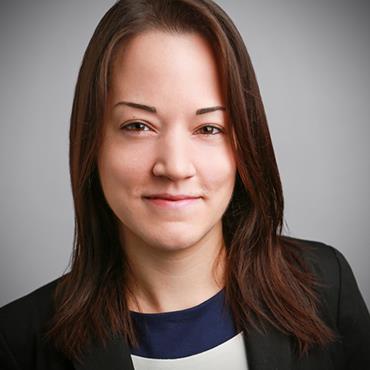Marina Martin: Building a new digital service at VA

In an interview with FCW, the Department of Veterans Affairs' chief technology officer talks about overhauling the digital experience for VA customers.

As chief technology officer at the Department of Veterans Affairs for the past year and a half, Marina Martin has been streamlining VA's disparate online customer relationships into a service that is focused on veterans.
The effort will kick into high gear in 2015 for a couple of reasons. First, VA Secretary Bob McDonald is in the midst of a reorganization designed to make the department more responsive and its online services easier to navigate.
Second, Martin is leading the charge to bring in a new digital services team at VA. She's taking applications for founding members who will be hired for two-year appointments (with the possibility of a four-year extension) at GS-15 pay levels.
The approach mirrors that of the General Services Administration's 18F and the Office of Management and Budget's U.S. Digital Service. The idea is to bring in a group of outside technologists with experience in the latest tools, agile work styles and design principles, and disseminate that expertise throughout large government organizations.
Martin won't say how many people she plans to hire but said the founding group will be in the "high double digits" -- enough people to break into subteams to work on high-impact mission areas such as modernizing the delivery of health care and benefits and improving the digital experience.
Martin spoke with FCW's Adam Mazmanian by phone on Dec. 17. The interview has been edited for clarity.
What are your priorities as CTO of VA?
My priority has been on digital service delivery to veterans and how we can collaborate more internally and place new technology to [provide] better and better services to veterans.
There's a long-term goal of giving veterans a single point of access where they can sign on and access the entire suite of VA services.
We definitely want a veteran-centric digital experience, so we look at their needs holistically with how they interact with the agency. Instead of them having to know how to navigate VA and how we're structured, we should be where they're looking for us.
Digitally, we can do things like follow their search term paths, make sure that they're being addressed, make sure the information is conveyed in a human-readable form and make sure their needs are being met in one place across different business lines.
What products or projects have you been working on to achieve that?
The GI Bill Comparison Tool allows veterans to understand the benefits they can receive from the GI Bill at different schools for different purposes and across different chapters [or sections of the legislation].
It takes data that was previously available from multiple different agencies in multiple different formats with multiple different unique identifiers and makes a simple tool where the veteran can just indicate their number of years of service and the school they want to attend and see a very detailed breakdown of the benefits available, which is particularly important for many veterans who may qualify for benefits under more than one chapter.
That is one example of collaboration across agencies that gave veterans a very simple tool that met their needs in a way that we weren't meeting before.
The Veterans Employment Center [is] a cross-agency collaboration involving Labor, Defense and parts of VA to provide veterans one place in the federal government that they can go for employment information and help transitioning service members in particular get jobs outside the military.
Something that I didn't appreciate prior to coming to VA is that military advancement culture does not tend to incorporate resumes and interviews, so it's very possible that you could leave a very long military career and still need rather introductory help getting your resume together and understanding how to find jobs.
Previously, the federal government was offering a very fractured experience: one place to go to work for the federal government, one place to go to work for VA, one place to go to look for private-sector jobs, one place to go to post your resume, a different place to go for career advice, a different place to go to translate your skills into civilian careers.
We had a joint agency effort to combine and consolidate all those digital experiences into one -- the Veterans Employment Center -- so that a transitioning service member can go to one place and meet all their needs.
Early next year you're going to see a lot of movement toward enhancing our digital experience for veterans. We are starting a VA digital service team where we're going to be bringing in top technologists from the private sector, and one of their three main focus areas is going to be on unifying, streamlining and improving digital access for veterans. That includes Web-based, mobile, kiosks in VA facilities. Wherever a veteran is they'll be able to access VA services in a new, streamlined and improved way.
What is your involvement in technology projects? Do you refine requirements before a project is released to industry for bidding?
I do on projects in which I'm involved. Some of them tend to be areas of particular interest to me, Secretary McDonald and the VA leadership. On those projects, I'll be deeply involved in the process and partnering with other leadership, including our CIO.
A lot of VA stakeholders -- service organizations and others -- are watching what you do. How do they have input into the digital services the VA offers?
I think we could continually improve our process there. I believe strongly in user-centered and human-centered design, and that doesn't just mean running a prototype by a small group of veterans. That means having stakeholders and end users and customers involved every step of the way.
It can mean shadowing customers for weeks if you're working on an application for a medical provider. It can mean using digital services like Mixpanel or Google Analytics to find out when people are hovering over the help button or stuck at a particular point, so you can dive into that and fix it. You have real-time data to show you user paths. And [you're] constantly iterating, understanding that whatever you design upfront is not going to be the right thing.
You've got a mix of older and younger customers. How does that affect your approach?
It's critical to focus on customer segmentation. Our research has shown that it's not necessarily the case that age is the divide. We have some incredibly digitally savvy older veterans and some 20-year-old veterans who prefer a high-touch environment.
Being a veteran-centric VA means having a consistent experience across mediums. A digital experience is available for the tech-savvy [veteran] who wants self-service, a similar experience when you call on the phone and also a consistent experience when you interact one-on-one.
I think the digital experience can help not only empower digital-savvy veterans but free up human capital resources for those veterans who may need or prefer more of a high-touch interaction.
When he ran Procter and Gamble, VA Secretary Bob McDonald kept his technology staff very close, and I read that he had daily contact with his CIO. Has he taken the same approach at the VA?
I would say his experience being customer-centric and user-centered definitely has a big play with technology. In addition to being CTO, I'm one of his five senior advisers, so he has a very close relationship with technology rollout and ideation.
The VA has a relatively small IT staff when considered as a function of its overall IT budget. Do you have the resources you need to put this digital transformation into place?
We are very excited to welcome a digital services team at VA that can partner with our internal IT resources, collaborate on new ways to deploy or select modern technology, and do training.
Many of our employees are amazing and mission-driven and very talented, but they've been working within a legacy system. They haven't had an opportunity to work hands-on with a more modern infrastructure.
We're looking forward to partnering with them to help them learn new skillsets that can continue to benefit VA for decades to come.
What are you doing to bring more innovative companies into the contracting mix?
VA is the lead agency on the Smarter IT Delivery performance goal, part of the Cross-Agency Priority Goals. We need to look a lot more at that contractor relationship and understand what is stopping some of those best companies from approaching government. What are the complications in that space? How can we help them understand the process? How can we simplify the process, or if it needs changing, how do we change the process to help them work with government and provide new and better services to our customers?
I think the process could be clearer, and I think that there are things that could be done on both sides to help improve it.
NEXT STORY: Chaffetz announces new IT subcommittee



